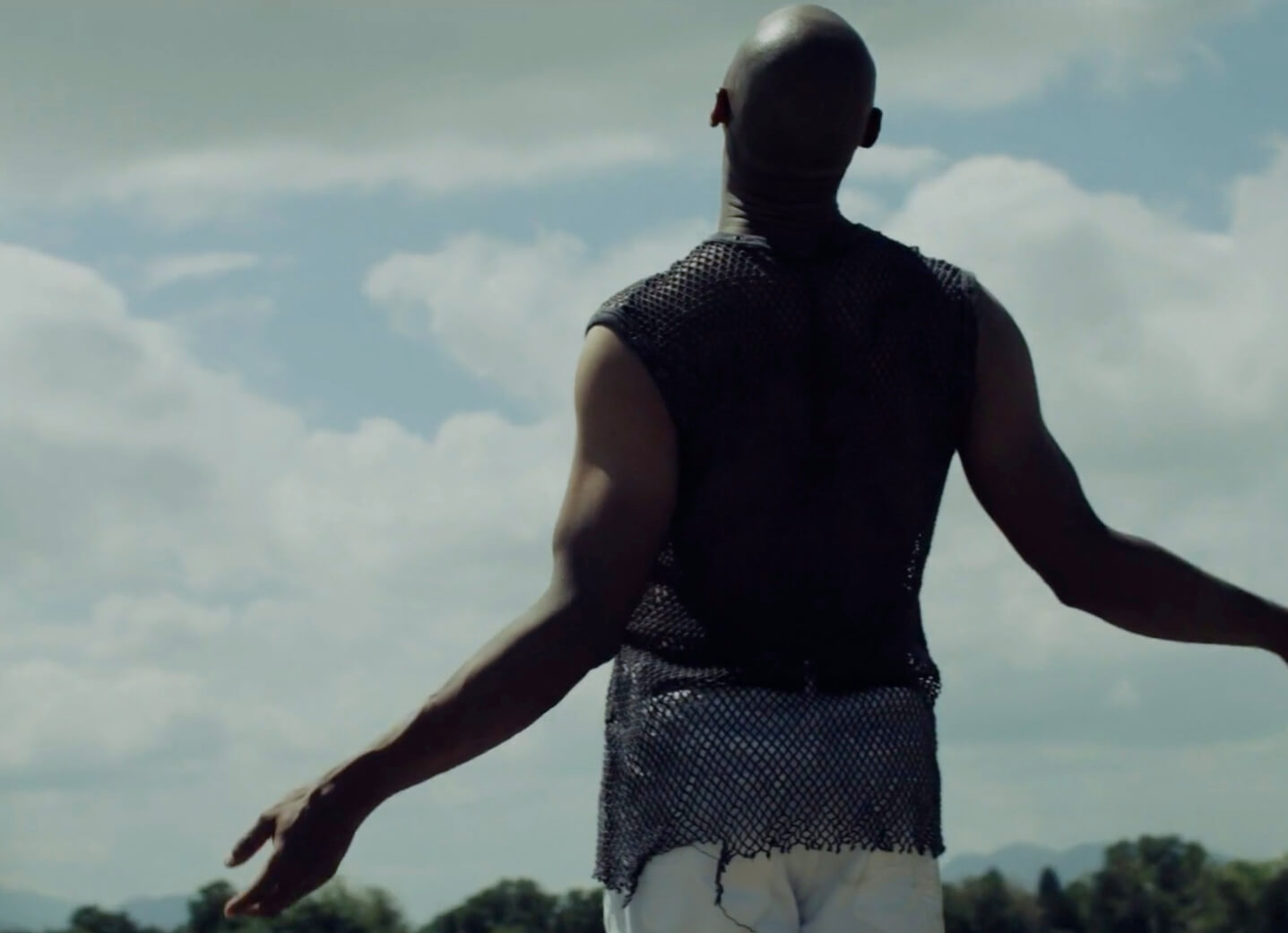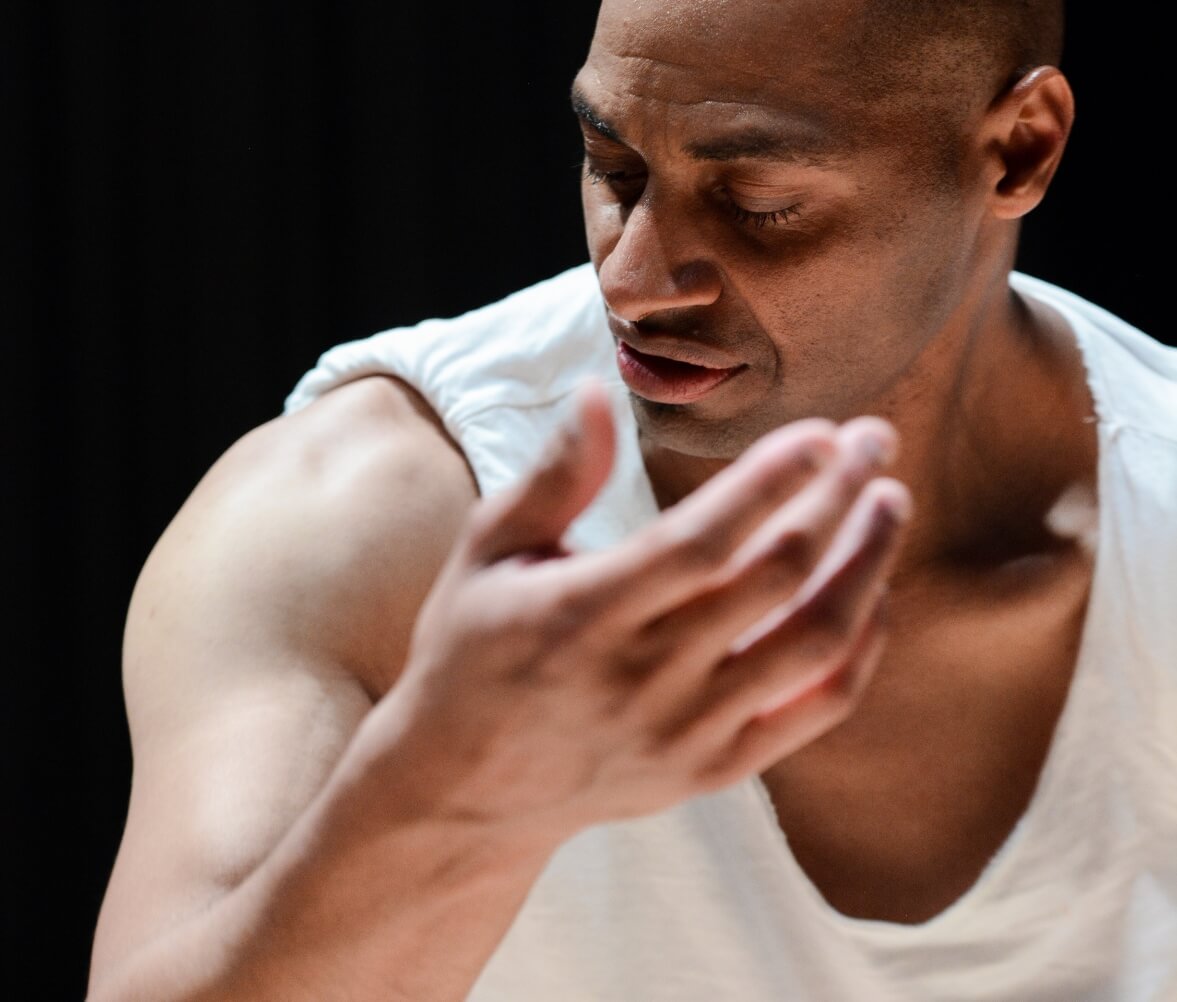A Lesson for Living:
How Watching My Father Learn to Walk Again Prepared Me for the Pandemic
By Helanius J. Wilkins
• 7 minute read

“You’re always a day late and a dollar short” is one of my favorite sayings from my younger years in Louisiana.
It is not my favorite because of what it what it means but rather how it makes me laugh out loud, sometimes to the point of tears. Just reading the statement I find myself reliving moments of how family members performed it—the attitude in their voices, the look in their eyes, the posturing of their bodies, and how it was a way of reading (calling out) someone covered up with a joke, sort of.
I wrote the first iteration of this essay in June 2020 as an additional Father’s Day gift to my dad, a few days late (go figure!). Well . . . the idea did not fully form until the early morning of Father’s Day. Oops! And, although it’s not the case at this moment, I do know a thing or two or three about being a dollar short. After all, I am an artist who on multiple occasions has had to transform big dreams into projects with significantly less than a Beyoncé budget.
When I think of the phrase “You’re always a day late and a dollar short,” I also think about resilience—the ability to recover from or adjust easily to, despite hard luck or change. One of my earliest lessons about resilience came through observing my father. Early in my childhood he suffered an on-the-job accident where he was pinned for 30 minutes under a heavy pipe. He was bedridden in a hospital for several months. That was followed by a physical rehabilitation process that spanned more than a year and included learning how to walk again. His sheer will to recover, to be independent, to be strong, to walk again uncovered lessons about patience, focus, determination, practice, grace, flexibility, and being fearless—all characteristics that I believe are markers of resilience, and hence of living.
His experience taught me that resilience is a cyclical process of learning, unlearning, relearning, and how in the relearning, new insights can be gained about the self, others, and the world around us. In this sense, resilience translates to student for life, a value that is deep-seated in my core. I am reminded of a quote by American poet, writer, and professor Sonia Sanchez: “I cannot tell the truth about anything unless I confess being a student, growing and learning something new every day. The more I learn, the clearer my view of the world becomes.”
More recently, I found myself reflecting on how learning to walk is a metaphor for new beginnings and developing a resilient body. I’ve been reflecting on how I began learning to walk again in the summer of 2020 due to the COVID-19 pandemic and the uprisings triggered by issues of police brutality and structural racism in America. Afraid at the onset of these things, I began to walk solo—up to 16 miles a day—in protest and with purpose.
By finding some solace in walking (a practice I continue now up to three times a week), I feel I am doing something larger. Perhaps I am creating a ritual for self-care. Perhaps I am revisiting my discovery that my father’s journey was about resilience, and therefore living. Perhaps it is also about claiming a simple, easily taken-for-granted activity as a source of bravery and groundedness. Perhaps it is a practice in repetition that is meant to teach me the foundation for something new. (After all, Prince has a song titled Joy in Repetition.) Perhaps this practice is meant to reconnect me to my childhood, a time when learning how to walk was bold, challenging, fun, filled with falls and constantly having to get back up, holding on to surfaces including the hands of my parents and relatives, an early sign of independence that truly felt freeing. Hmm . . . were my childhood experiences of learning to walk and observing of my father’s journey also illuminating something more? Teaching me that I would have to repeatedly learn how to walk? Teaching me about the strength I would need to call upon to endure as a Black male adult in America? Teaching me to unlearn fear in times when I may be most afraid?
In 2011, I deliberately chose to unlearn fear by embarking on my first evening-length solo project. I likened it to learning how to walk again. /CLOSE/R/, which premiered in 2012, contrasted from my previous projects up to that point because it was personal, semi-autobiographical. It invoked living in the way I witnessed and learned about from my father when I was a child. Following the premiere of the work at Washington, DC’s Dance Place, I shared an extended conversation with a close friend where I expressed a sense of fearlessness. I had found my footing deeply rooted in uncertainty and had exposed my truth through a practice of shedding. I felt an aliveness as well as a heightened humility and grace because, even in my solo performance, I felt a visceral sense of connection and community.
My dad attended a live performance of /CLOSE/R in 2013. Immensely proud and enthusiastic about the work, he said, “I did not recognize my son on the stage. I have never had that experience before.” Although I have never asked, I have often wondered what he meant when he said that to me. Perhaps he saw a reflection of himself in me? Did he see a son who was strong, resilient, and unapologetic for his own journey in a way that mirrored his father’s strength or past moments in life?
/CLOSE/R allowed me to feel courageous. In many ways it was a rebirth: when I learned to walk fully embracing all that is Helanius. When I discovered a truth. Movement, for me, became the way for this very shy Southern child who was afraid of people to express himself—to be seen, to be heard, to be felt, to have a presence. My body became my voice, and my actions were my words.
Making dances is an ongoing lesson of learning to walk over and over again. In this present time, making new works feels particularly essential as my way to disrupt oppression. Making new works is a demonstration of resilience. Dance is a vehicle for me to protest, build community, exhale, and celebrate. It keeps me connected to my father’s lesson for living while traveling uncharted territories.
This is work-in-progress footage of my first exploration at making a virtual dance when there seemed to be no other options. I never completed the project. But, now reflecting on it, I am feeling that perhaps it was never meant to become something finished with a nice bow on it. It was meant to be a messy process, a vehicle for discovering how to create in a different way. It was meant to move the needle from self-care to community care. It was meant to be a respite from the weight of the times to refuel and continue along paths of learning how to walk again.
Presently I continue along paths of learning how to walk again through a multiyear venture, The Conversation Series: Stitching the Geopolitical Quilt to Re-Body Belonging, which features new choreographies, a documentary film, and a digital archive of the process and performance. The project will bring together artists, humanitarians, social justice activists, DEI&SJ (Diversity, Equity, Inclusion & Social Justice) consultants, and—most centrally—members of diverse, intergenerational communities across the nation. The work is performed by an interracial male duet (A. Ryder Turner and myself) and centers the value of bodies coexisting: bodies sharing weight and responsibility, dancing to become better ancestors. As we travel to make and share this work, we will stitch together a dance-quilt to broaden our understandings of what it means to be American and sew ourselves together anew. Making this work, I am less afraid to walk.
My hope is that collaborators throughout the creative process will feel a similar sense of liberation from the intense pressures of our world in this moment. That those experiencing the work will share in a sense of belonging, be inspired to action—in their own way—toward creating a more socially just landscape of potentiality. I share below the trailer for my latest screendance, EntangleMEN: from the dugout, which offers a glimpse at beginning content for developing the stage production of The Conversation Series: Stitching the Geopolitical Quilt to Re-Body Belonging.
About Helanius J. Wilkins

Lafayette, Louisiana native and Boulder, Colorado transplant, Helanius J. Wilkins is a choreographer, performance artist, educator, and innovator who lives in a country where not even for a moment is he allowed to forget he is Black. Wilkins’s creative research and projects are rooted in the interconnections of American contemporary performance, cultural history, and identities of Black men. His projects examine the raced dancing body and ways ritual can access knowledge. He uses remembering to piece together and liberate Black identity through performance. Having choreographed 60+ works, his honors include the Pola Nirenska Award for Contemporary Achievement in Dance (DC’s highest honor, given by the Washington Performing Arts Society, 2008) and the Kennedy Center Local Dance Commissioning Project (2002 & 2006). Organizations including the NEA, NEFA National Dance Project, NPN, the DC Commission on the Arts and Humanities, and the Boulder Office of Arts and Culture Public Arts Program have supported his work. He founded and artistically directed DC-based EDGEWORKS Dance Theater, an all-male dance company of predominantly African American men that toured nationally and internationally (2001–14). He is Director of Dance and a professor at CU Boulder. He is a member of the National Board of Directors of the American College Dance Association (ACDA) for the Northwest region and was appointed in 2018 by Governor Jared Polis to the Colorado Council on Creative Industries. Learn more at helaniusj.com.